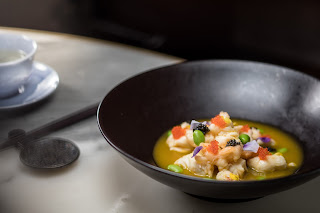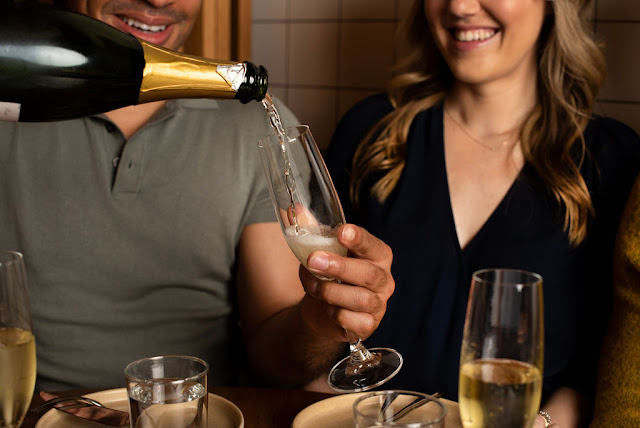Chinese New Year in New York City: Where to Dine for Good Luck and Prosperity during the Year of the Dog
The Year of the Dog celebrates the return of spring and the beginning
of the Chinese New Year. This is a festival
of unity, a way for friends and family to come together to enjoy traditions
that will bring good fortune for the coming year. 2018 celebrates the dog, a
symbol of loyalty and honesty, as we breathe some optimism into the days ahead.
Unlike one-night New Year’s celebrations, Chinese New Year is celebrated for
two weeks, through March 2 so you have plenty of time to enjoy. Here are some
ways you can participate in this important holiday:
The sexiest celebration in New York City happens at Hakkasan
in the Theater District. Kicked off by a lion dance on the first evening, the
two weeks of the Chinese New Year are filled with special dinners and
drinks. For 2018, there is a $118 prix
fixe menu (for a minimum of two guests) featuring the best of Hakkasan’s modern
Cantonese signature dishes. Dishes have been selected for the cultural significance
of their ingredients and their ability to portend good fortune. Baked Chilean sea
bass with kumquat glaze will bring prosperity as eating fish at the New Year is
said to increase wealth. Similarly, oysters, traditionally symbolizing fortune
and good luck, are included in Szechuan oyster with lotus root and crispy rice
in mantau. Fat choy is an ingredient
that means “to grow wealth” in Chinese and is found in the abalone fried rice
in bean curd wrap with Chinese sausage and shiitake mushroom.
Hakkasan’s dinner also features a special Chinese New Year
cocktail, the Good Fortune, made with Grey Goose Orange and fresh blood orange
ice (oranges are traditionally given during the new year to symbolize good
luck, happiness and abundance); five-spice pomegranate syrup, adding red to the
drink, an important color of good luck, and the pomegranates to inspire
fertility; satsuma godai; lime juice; and an orange peel rosette to add a touch
of floral design, signifying rebirth and luck. Toast away!
A sweet finish is provided with Hakkasan’s re-imagined
fortune cookie, the macartune, which has 88 (8 represents prosperity in Chinese
tradition) New York-centric fortunes written by author Jay McInerney like “Your
train will arrive on time and there will be a seat available” (happy) or “A new
skyscraper is being built next door to your building and your view is about to
disappear” (sad). The writer of “Bright Lights, Big City” and Hakkasan Executive Pastry Chef Alexander Zecena have
imagined the vanilla-flavored cooked as a riff on New York’s beloved black and
white, with one half coated in chocolate and then stamped with a red chocolate
seal to symbolize good luck for the New Year.
Another tradition continues at Hakkasan, too, the annual wishing
tree. Guests receive a red ribbon upon arrival on which they write their
wishes. Ribbons are hung around the dining areas, a custom that is said to have
begun hundreds of years ago in Hong Kong. In Lam Tsuen, Hong Kong, villagers
would arrive to visit the secret Wishing Trees and hang notes on the branches
with wishes for the year ahead. Today,
as yesterday, guests are encouraged to write their wishes with the hope that
all written down will come true.
Little Tong Noodle Shop in the East Village pays homage to
its Yunnanese roots with its first-ever 16-Day Chinese New Year Celebration. The mixian menu here is enhanced with a special
dish at both lunch and dinner such as Day 3’s goubull 18-fold dumplings and Day
16’s yuan xiao, a sweet sticky rice ball soup. Each day represents a different celebration
starting with the Celebration of the Chicken on February 16 with shaokao, fire-grilled
chicken wings with gingko and the Celebration of the Dog on February 17 and
finishing with the Celebration of the Dragon on March 1 when red snapper and dragon
fruit slaw will be served. The grand finale happens on March 2, the Lantern
Festival.





Comments
Post a Comment